Motion engineering quiz: If you need to actuate a 500 kN axial load along a 1500 mm stroke, do you use a roller screw or ball screw?
If you instinctively said roller screw, you may not be familiar with high-capacity ball screws as an economical and simplified alternative. Roller screws have been promoted as the only technology of choice for handling large loads when size is a constraint. But in actuality, advances in ball screw technology have made special versions into viable candidates for high-load applications as well. This is important because a high-load ball screw is typically less than half the cost of a comparable roller screw at equivalent performance points.
What’s the difference?
A ball screw (Figure 1) consists of a threaded metal shaft with a nut that rides along its length as a motor rotates the shaft. The nut connects to a table, an arm or other load as determined by the industrial process that is being automated. Re-circulating ball bearings packaged within the nut contact the threads and provide the load-bearing path. The coefficient of friction between the mating components is very low, which typically improves system efficiency by more than 90%. The load capacity of the ball screw is then a function of the ball bearing diameter, number of ball bearings and the surface contact area. The combination of these parameters then defines the load capacity of the assembly and, therefore, the resultant life of the components.
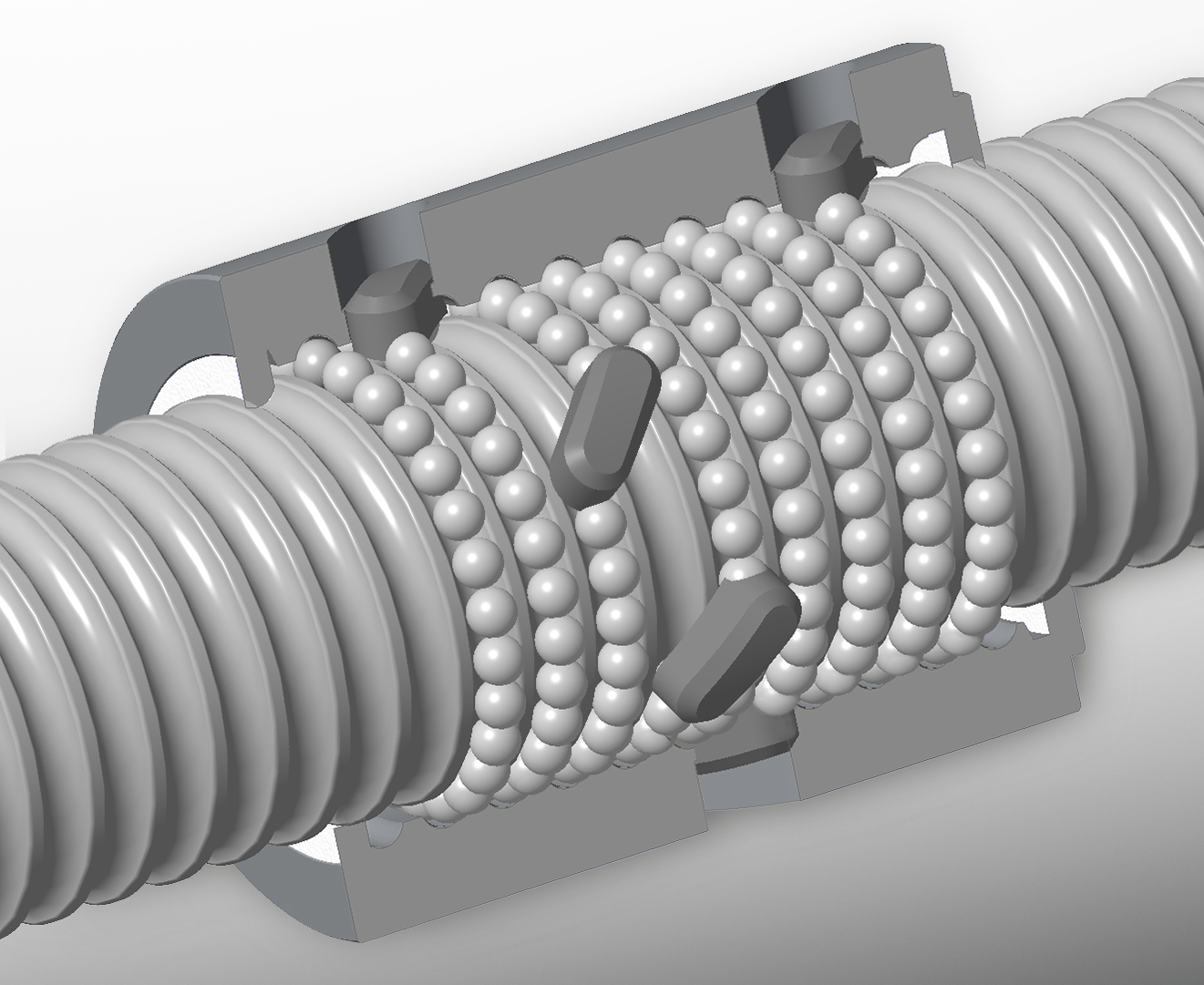
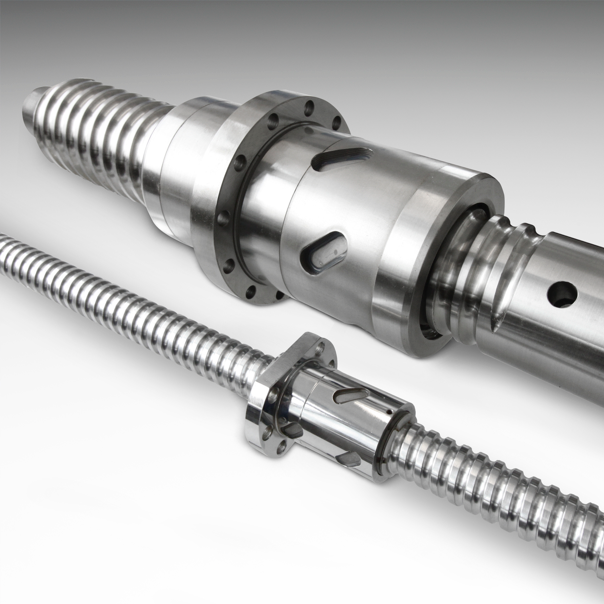
Figure 1: Thomson ball screws consist of a threaded metal shaft with a nut, which rides along its length as a motor rotates the shaft. The nut connects to a table, an arm or other load. Depending on the diameter and lead of the ball screw shaft in use, Thomson offers ball nuts with three different ball recirculation systems.
For higher loads, design engineers have specified roller screws (Figure 2) into many applications. In a roller screw, the load-bearing mechanism is a set of recirculating rollers instead of balls. The rollers have more total surface contact area than balls, which increases the load-carrying capacity and can also increase service life.
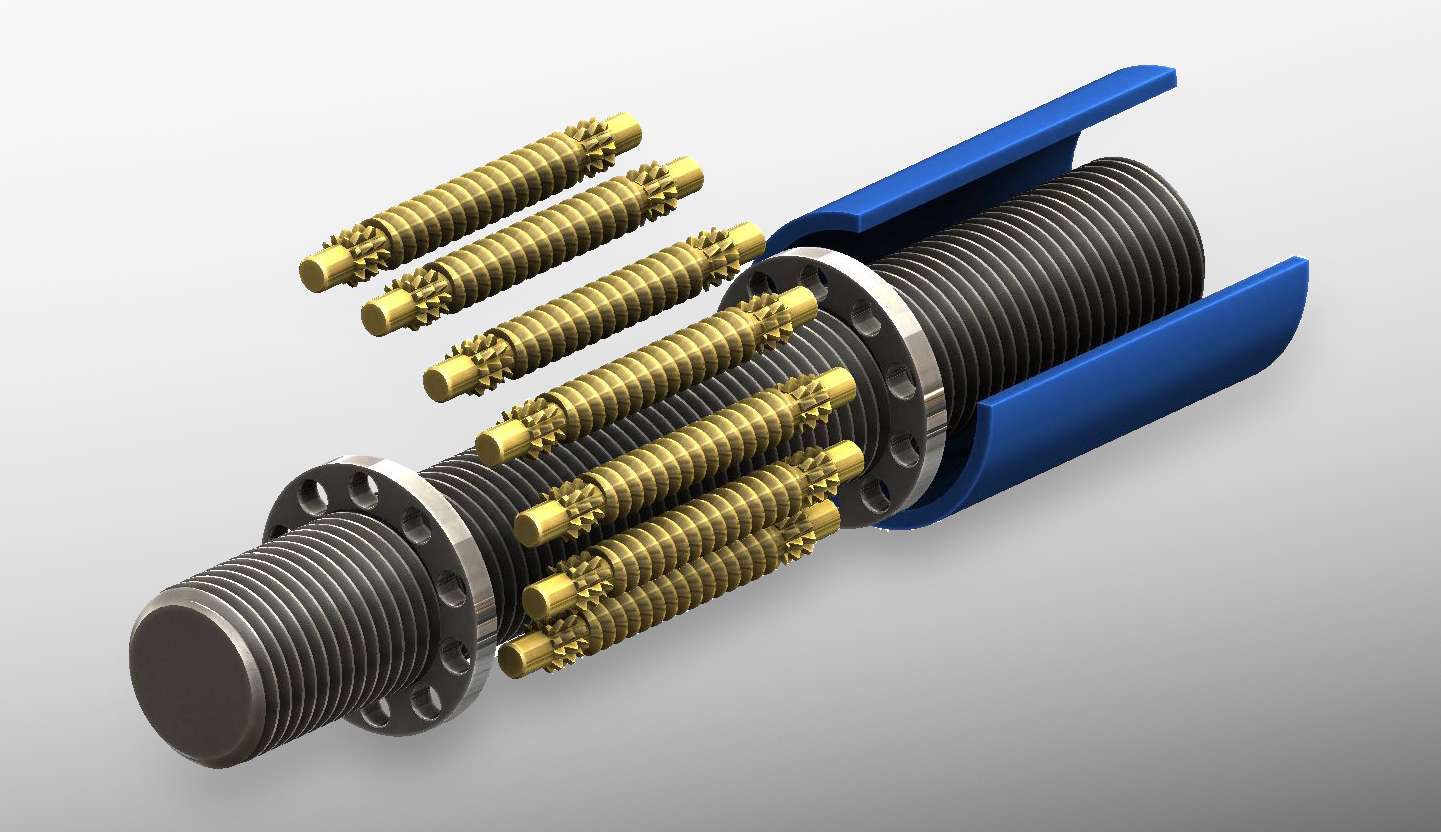
Figure 2: Roller screws consist of a set of recirculating rollers. Roller bearings with grooved rolling elements have more total surface contact area in comparison to balls. As a result, service life and load-carrying capacity increases.
But these benefits come at a premium. Compared to the relatively simple, time-tested ball system, the roller screws require extensive upfront precision machining and more complex assembly. This contributes to the overall higher cost of the roller screw as well as a larger footprint for final installation.
Characteristics of a high-load ball screw
Thomson Industries has developed a high-load ball screw by implementing a unique thread form that increases load-bearing capacity four to eight times over traditional ball screws. This gives the application engineer the option of deploying a ball screw in most any application that previously required a roller screw. Or, because the life of the assembly is a direct function of the load capacity (See Side Bar L10 Life Expectancy Calculation), using a high-load ball screw in a low-load application would extend the life of the product.
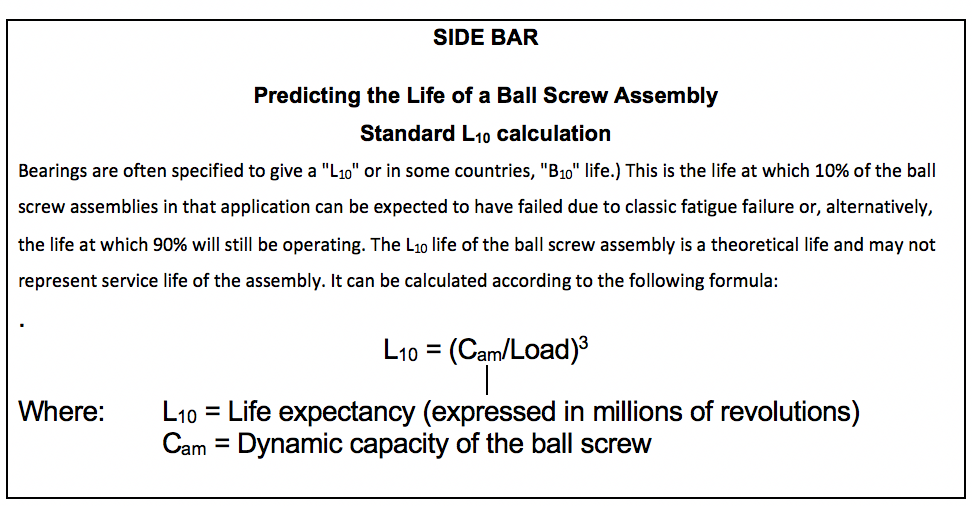
Table 1 illustrates the advantage of a high-load ball screw in an application that requires a minimum of 470 kN of load capacity. A standard configuration ball screw can provide a solution but would have twice the diameter and cost 63% more. A roller screw is also capable but has a nut that is close to 50% larger and would cost 150% the price of the comparable high-load ball screw.

Table 1: Comparing standard, high-load ball screws and roller screw drives for an application requiring a minimum of 470 kN load.

Price and Diameter comparison of standard, high-load ball screws and roller screw drives.
High-load ball screws are typically available at screw lengths up to 15 m, with single or double nuts, and in standard sizes up to 160 mm in diameter with up to 1,440 kN of dynamic load capacity. Among the applications that stand to benefit most from high-load ball screws are large fabrication machines, injection molding machines, metal fabrication equipment, and industrial security door and gate systems used in nuclear power plants.
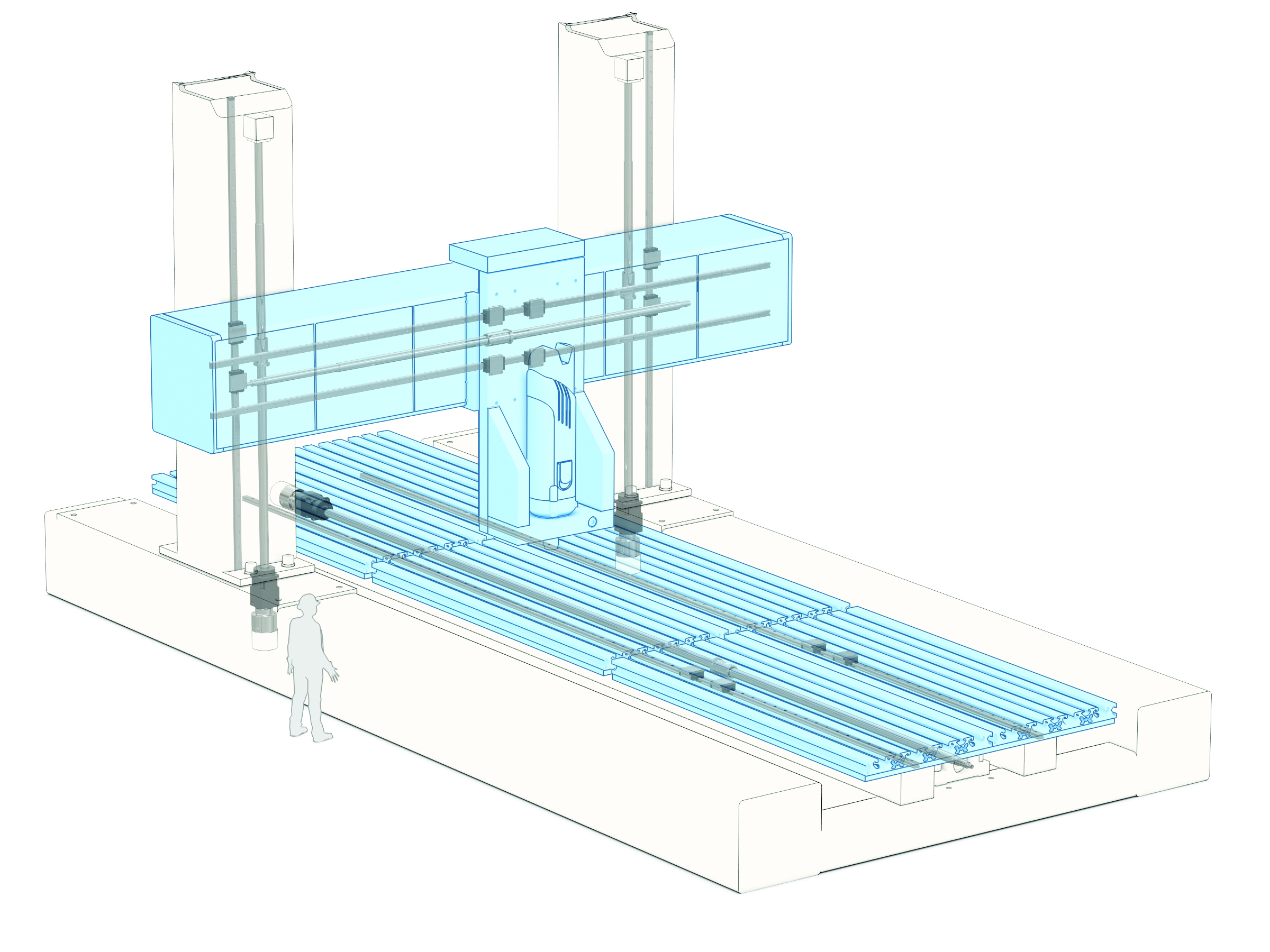
Ball screw-driven horizontal and vertical axes are used in large fabrication machines, which move heavy loads accurately and safely. This ensures a long and reliable life with minimum maintenance. Examples include mills, water jets, plasma cutters and automatic welders.
Large fabrication machinery. Mills, water jets, plasma cutters, automatic welders and other large equipment used in industrial fabrication often must move heavy loads accurately and safely across ball-screw-driven horizontal and vertical axes. Consider a machine fabrication application that is running a load of 100 kN, 24/7, for example. Based on the standard life calculation, a ball nut drive used in the application may last 3-4 months according to the fatigue failure analysis and statistical life expectancy. Implementing a high-load ball screw, on the other hand, would double the load capacity and yield eight times the life, getting more value out of the drive while reducing maintenance costs. It also enables the manager of each production unit to optimize for higher load capacity, longer assembly life or an acceptable balance of both.
Injection molding and metal fabrication equipment. Injection molding, pressing and metal fabrication machines require ball screws to handle high loads in a short stroke with high precision. They must control system accuracy and manage product tolerances. An injection molding application, for example, might require 400 kN of force over 500 mm, for which a designer might traditionally specify a more expensive roller screw. But that high force is required only for maybe the last 10 mm of travel, when the mould is being compressed. The user is still, however, paying a premium for high load across the full stroke. Using a high-load ball screw instead of the roller screw yields the power needed at the final 10 mm and parlays the additional load bearing potential into extended life product life.
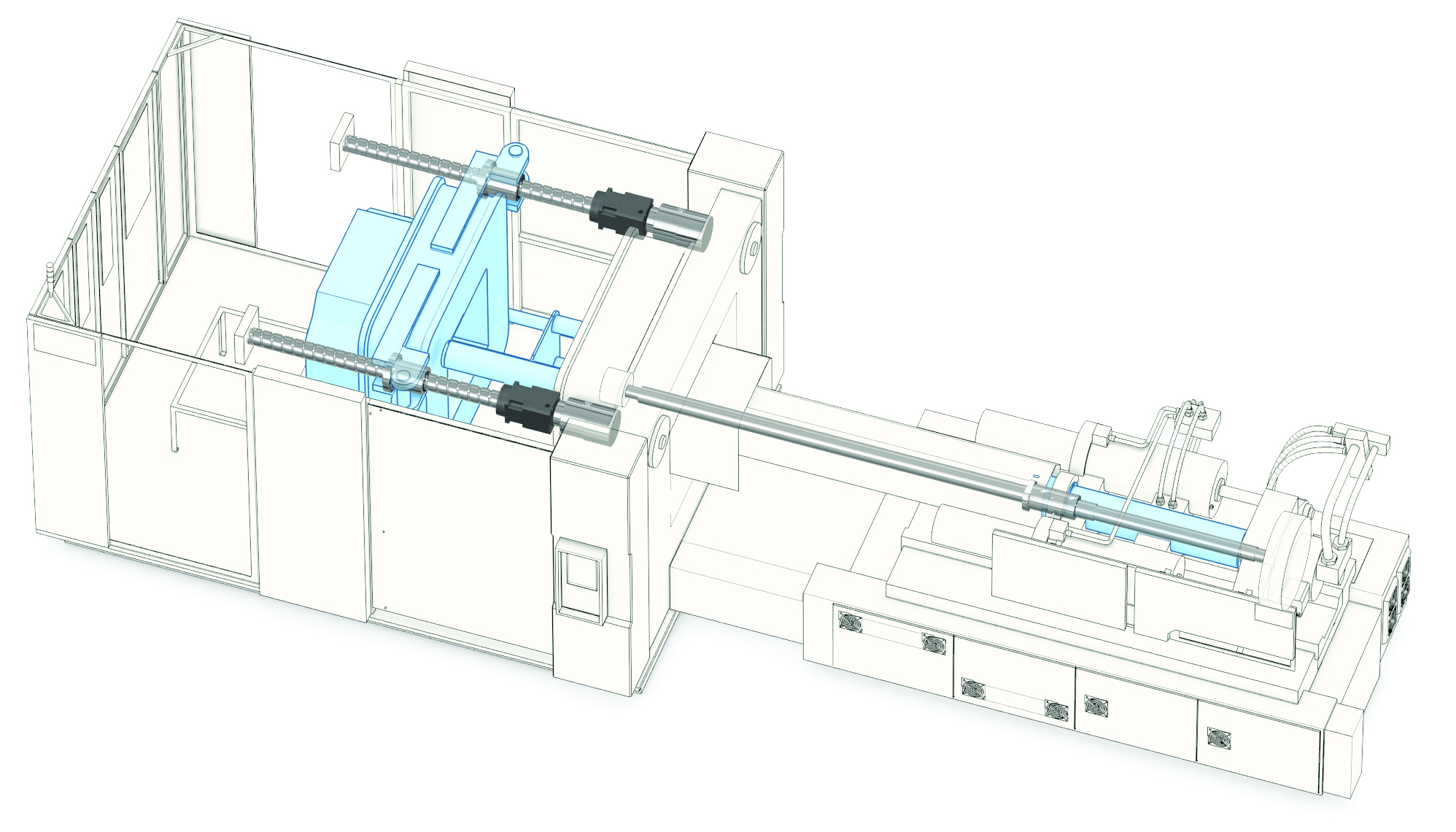
In injection molding and metal fabrication machines, ball screws are essential to handle high loads in a short stroke. Additionally, precision ball screws control system accuracy and product tolerances.
A new high load alternative
Specifying high-load ball screws in applications previously relegated to roller screws can save money, extend product life or both. Any new application will require careful analysis of load capacity, product life and cost, and in doing so, there may still be some applications well suited to roller screws. But given new ball screw technology advances that increase their load-bearing capacity, it is now wise to consider high-load ball screws in any application for which you may be considering a roller screw.
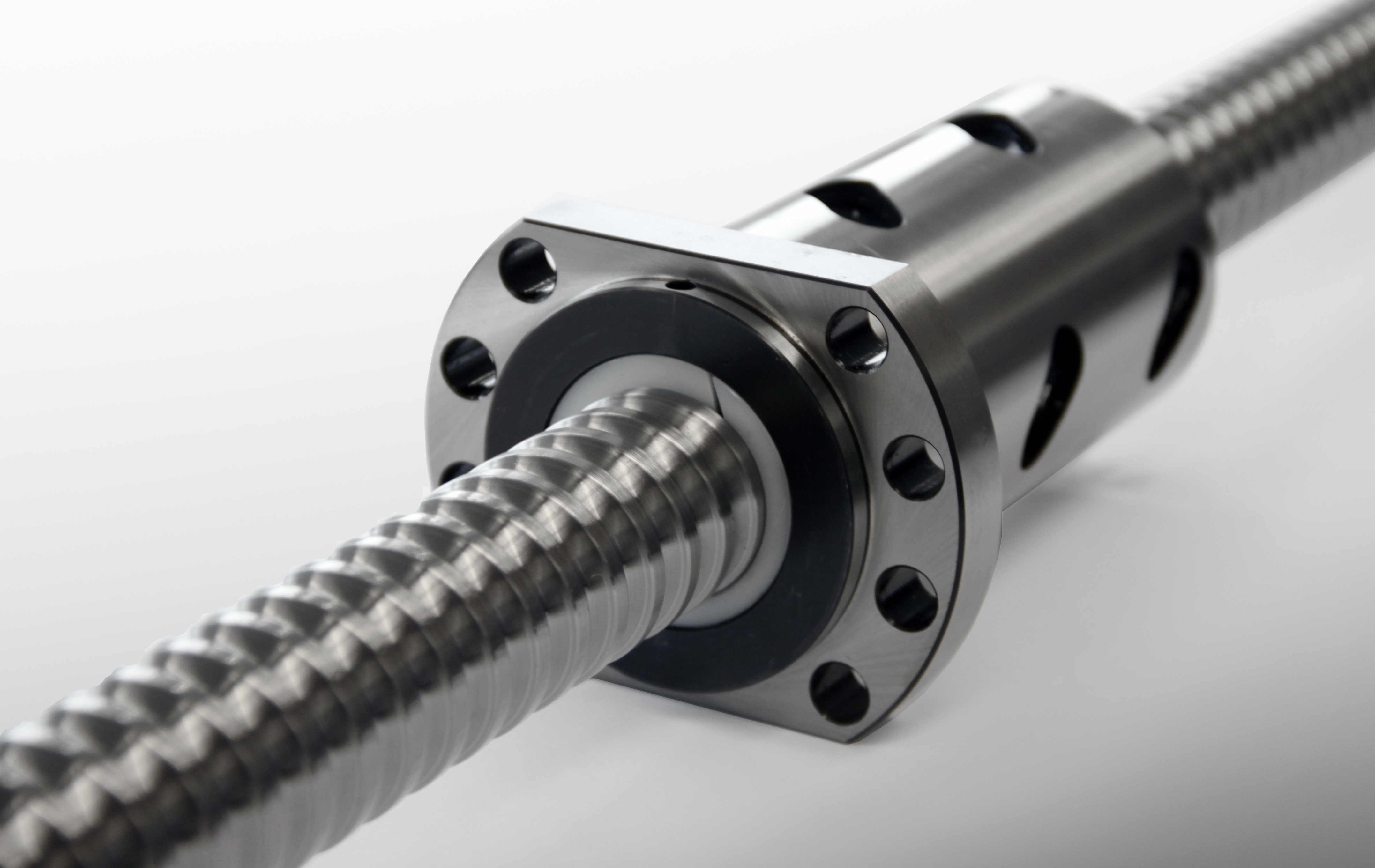
Title image: Thomson provides high-load ball screws that are commonly used in injection molding machines, metal pressing and forming, test rigs, straightening machines and tube-bending machines.


